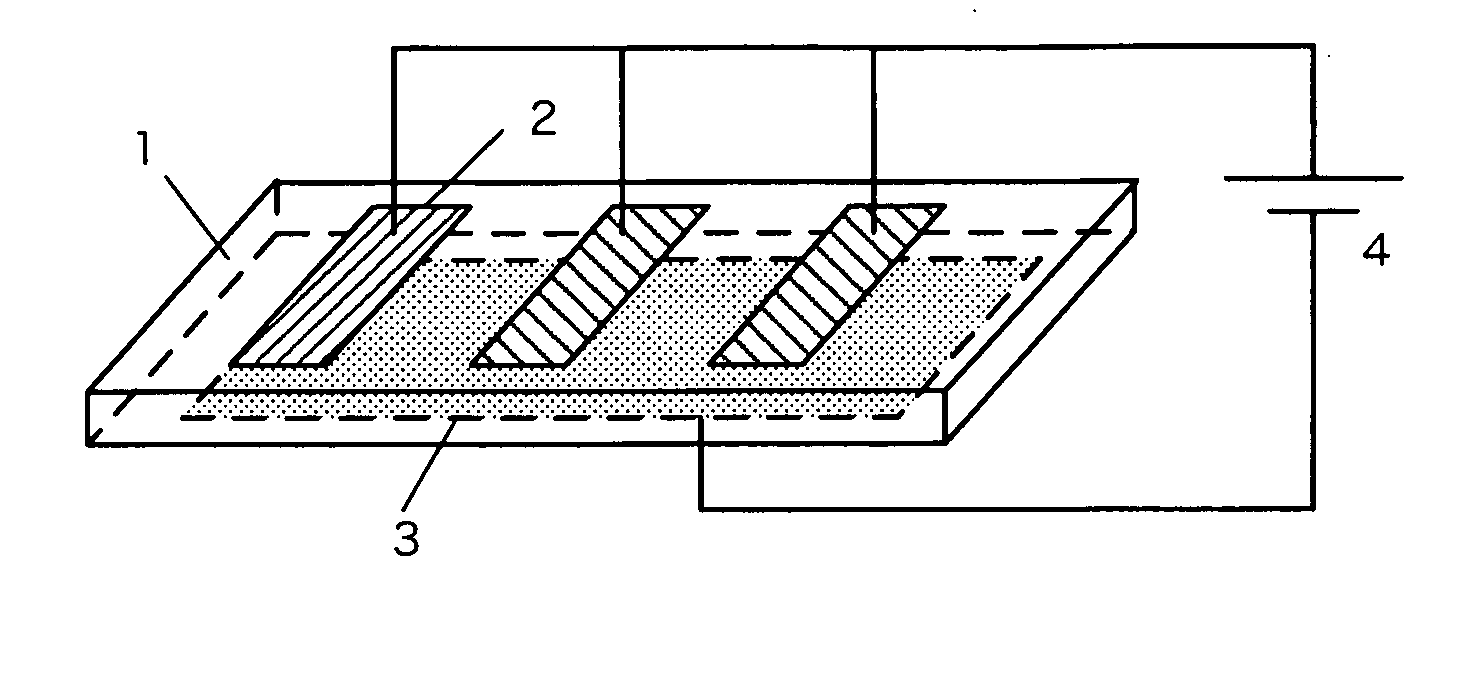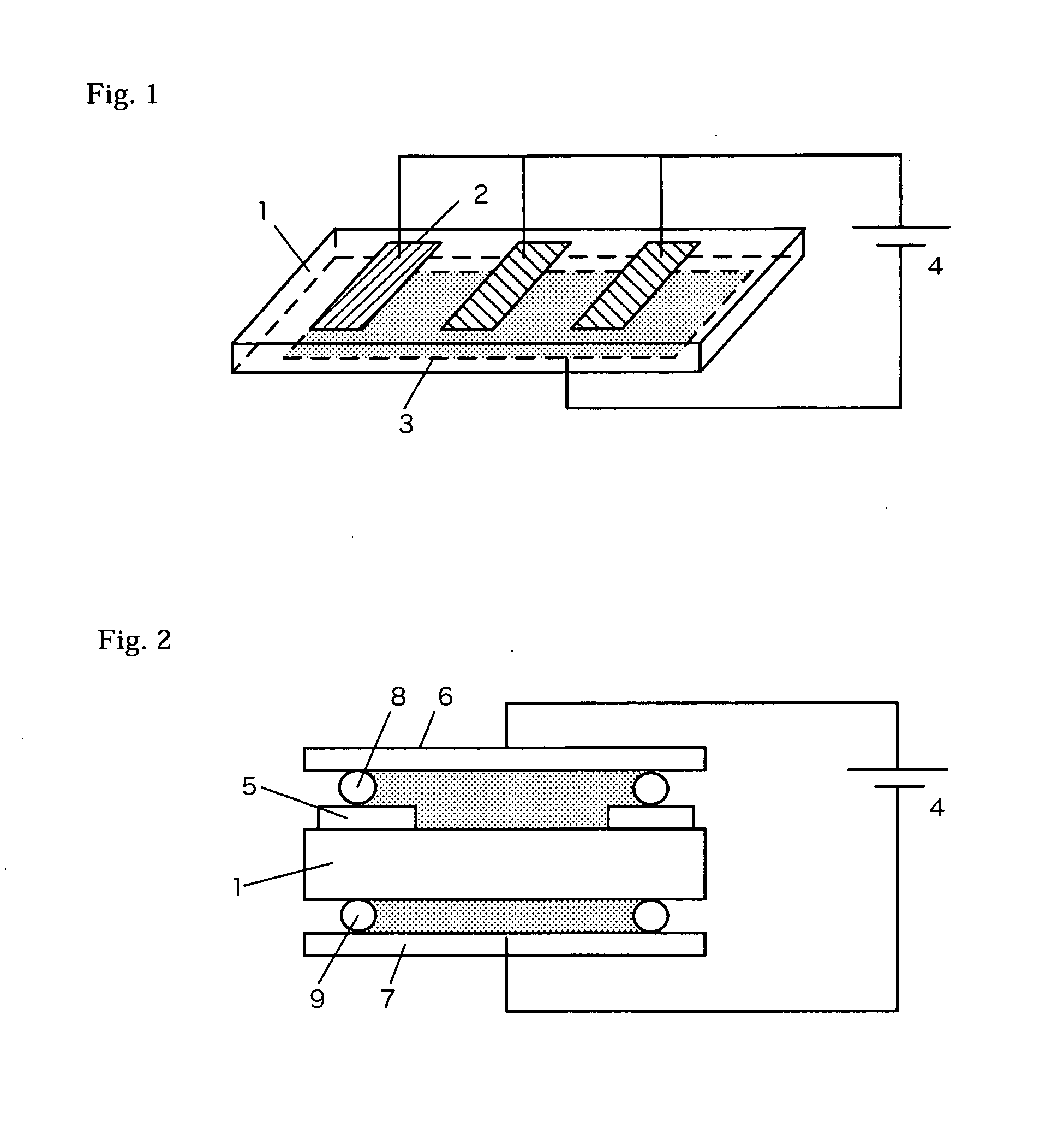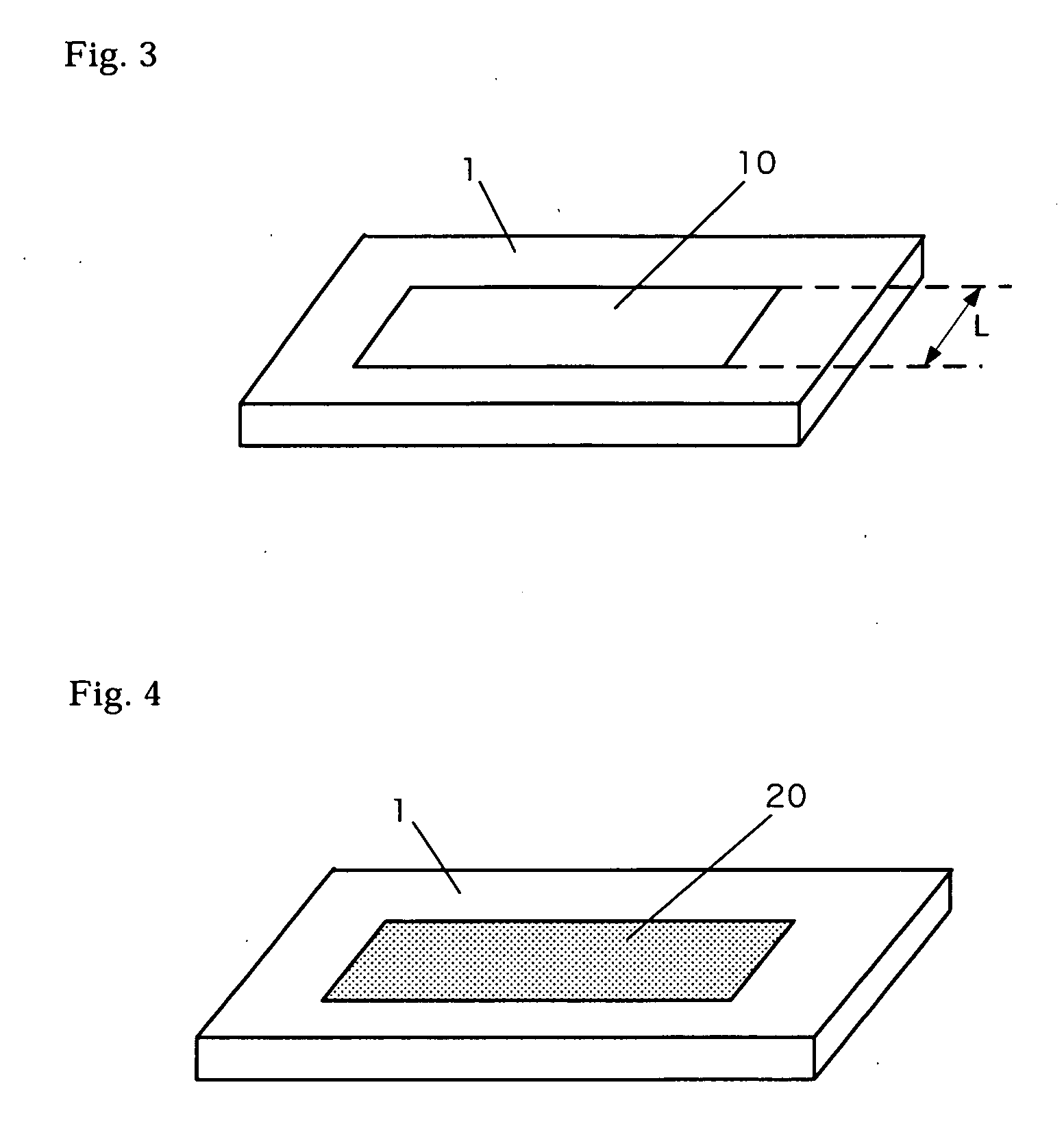Method for forming polarization reversal
a technology of spontaneous polarization and polarization, applied in the field of method for forming a can solve the problems of difficult to form a desired ridge structure, difficult to form a homogeneous ferroelectric spontaneous polarization reversal, and substrate is easy to break, so as to achieve the effect of effectively applying an electric field to the substra
- Summary
- Abstract
- Description
- Claims
- Application Information
AI Technical Summary
Benefits of technology
Problems solved by technology
Method used
Image
Examples
Embodiment Construction
[0128]In the following, the preferred embodiments of the present invention are explained in detail.
[0129]FIG. 4 is a diagram showing many nucleuses generated on the surface of a ferroelectric substrate 1 for a ferroelectric spontaneous polarization reversal region 20.
[0130]If such nucleuses exist, a ferroelectric spontaneous polarization reversal is expanded around these nucleuses when an electric field is applied into the ferroelectric substrate. Thus, if these nucleuses exist moderately in a desired ferroelectric spontaneous polarization reversal region, it becomes possible to realize homogeneous ferroelectric spontaneous polarization reversal state across a large diameter ferroelectric wafer, even when a ferroelectric spontaneous polarization reversal is simultaneously performed for several large regions of over 25 μm in a ferroelectric spontaneous polarization reversal region width within a large diameter ferroelectric wafer of over 2 inches in diameter.
[0131]A method of applyin...
PUM
| Property | Measurement | Unit |
|---|---|---|
| width | aaaaa | aaaaa |
| width | aaaaa | aaaaa |
| diameter | aaaaa | aaaaa |
Abstract
Description
Claims
Application Information
 Login to View More
Login to View More - R&D
- Intellectual Property
- Life Sciences
- Materials
- Tech Scout
- Unparalleled Data Quality
- Higher Quality Content
- 60% Fewer Hallucinations
Browse by: Latest US Patents, China's latest patents, Technical Efficacy Thesaurus, Application Domain, Technology Topic, Popular Technical Reports.
© 2025 PatSnap. All rights reserved.Legal|Privacy policy|Modern Slavery Act Transparency Statement|Sitemap|About US| Contact US: help@patsnap.com



